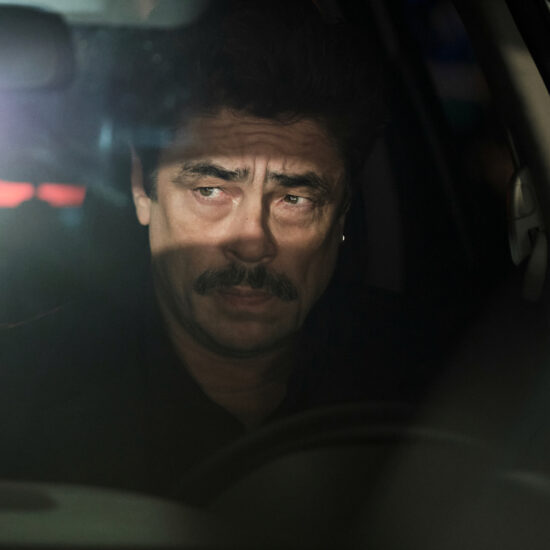
Joan Didion was a bit of a goth. Beginning with her first short story about death in the desert, she was drawn to dark subjects: cannibals, bikers, Jim Morrison, Dick Cheney. Her favorite house was the old governor’s mansion in Sacramento, a towering compendium of gothic arches and Victorian cupolas. As a teen, and for years afterward, she would drive to the outskirts of Sacramento, park next to the Matthew Kilgore Cemetery, sit on the fender of her car, and read a book. In these three acres of white marble gravestones, her connections to the land ran deep. Her great-great-great grandparents, Matthew and Massa Kilgore, and their children and grandchildren are buried in the cemetery’s southeast corner. The Kilgores tried to build a ranch in this area east of Sutter’s Fort, but the deluges defeated them, so they moved closer to the Sacramento River, where earthen levees were being built. The obelisk that marks the final resting places of the Ohio-born patriarch and matriarch remains. Its inscription marks the precise ages of Matthew (81 years and two days) and Massa (77 years, four months, and 29 days) on their deaths in 1882 and 1876.
Decades later their pensive descendent regularly drove to this still-quiet refuge to read in the company of dead souls. Then one day, as Joan pulled up to park, a rattlesnake slithered from behind a broken stone only to disappear in the grass. “I never again got out of the car,” she wrote in Where I Was From.
Joan Didion had an obsession with snakes. They are almost comically prevalent in her writing—or rather, fear of their presence is everywhere.
Snakes make their first appearance in the third paragraph of her first book, set in Sacramento, Run River. Everett, the husband of the central character, Lily, has a .38 with which he once shot a snake, a foreshadowing of worse violence to come. In chapter six, Lily recalls being afraid of possible snakes in an irrigation ditch and Everett picking her up and holding her to soothe her. In Didion’s famous “love song” to John Wayne, “There had been ahuehuete trees in Durango; a waterfall, rattlesnakes.” Snakes are so central to Play It As It Lays that the original cover features a coiled serpent; Quintana called it “the snake book.” In her essay “Los Angeles Notebook,” Didion’s neighbor hears a rattlesnake. In Blue Nights the house cleaner yells “Vibora!” to rattle a nosy social worker. Joan recalls running over a black snake in “On Keeping a Notebook.” In “California Notes” she writes of “rattlers in the dry grass” and of the California novelist Gertrude Atherton “cutting snakes in two with an axe.” (Here was a feminist role model Didion could embrace!) Writing for Vogue in 1961, she references the superstition that “self-respect is a kind of charm against snakes.” In 1965, she is in Death Valley and she imagines she hears a rattle-snake, “but my husband says that it is a faucet, a paper rustling, the wind.” Also that year, writing about her childhood in “Notes from a Native Daughter,” she admits, “I was a nervous child, afraid of sinkholes and afraid of snakes, and perhaps that was the beginning of my error.”
In the documentary The Center Will Not Hold, the director, her nephew Griffin Dunne, asks Didion about her reptilian obsession. “They were always on my mind,” she says. “You had to avoid them.”
Then she turns the tables on her questioner: “Do you have snakes?” she asks, grimacing.
“I just take a rake and kill them,” Dunne attempts to reassure her.
“Killing a snake is the same as having a snake,” she says, not mollified.
Snakes are an extremely common literary motif, of course, playing the main villain in the Book of Genesis itself, and in her youth, Didion bought into pastoralism. In a 1962 review of Evelyn Waugh for the National Review, she wrote, “the banishment from Eden is our one great tale,” adding that “hardness of mind”—the moral clarity whose rarity she lamented—is “almost invariably held at arm’s length, the way Eve should have held that snake.”
Courtesy of HarperCollins Publishers
The obviousness of the serpent metaphor may seem beneath the rhetorical talents of the queen of literary journalism. But for Didion, the fear was real, not merely symbolic. She grew up in a landscape where snakes were plentiful. California has almost 50 species, including seven types of venomous rattlers. Snakes were more than a literary device for Joan: They embodied a very real but also primal, even ancestral, fear.
It was Joan’s grandfather—Herman Jerrett, a miner and writer—who taught Joan the “code of the West” when it came to rattlesnakes: If you see one, kill it. If that meant getting out of the car and going into the brush after it, so be it. That was your duty to the next person who might come across this vermin and not have the luxury of a car or a shotgun or an axe.
Joan Didion relentlessly hunted snakes in human form, even as she spread the fruit of knowledge. You could say it was her prime objective: to expose corruption, lies, cruelty, hypocrisy, and the abuses of power.
Read More: Joan Didion Wrote About Grief Like No One Else Could
Because she hosted Hollywood parties where authors, politicians, artists, and stars mingled, then carried on this tradition on New York’s Upper East Side, and because she wrote about LA, and New York, and Miami so memorably, we tend to think of Joan Didion as an urbane, urban figure. But it is fundamental to her identity that she grew up in a natural environment. At one point she wanted to be an oceanographer, and in a world where STEM is encouraged for girls, maybe she would have been. A love of nature—particularly flowers, ocean, and sky—as well as a fear of nature—fires, floods, and snakes—animate her writing and are central to the core of who Joan Didion was. “Don’t you think that sometimes people are formed by the landscape they grow up in?” she said in a 1971 interview. “There’s a picture of the valley there, that particular look of absolutely flat land and that sense of things growing, it formed everything I ever think of or ever do or am.”
A close reading of Didion’s work reveals that a prime agenda was to expose the moral bankruptcy of the myth of the golden land and the entire rhetoric of westward expansionism. Her subject was the American empire. It took her years to fully grasp and articulate this, in part because she resisted it, especially as long as her parents were alive. “I didn’t want to figure out California because whatever I figured out would be different from the California my mother and father had told me about,” she said in 2006. There are topics—the fate of the Miwok Indians, the exploitation of Mexican immigrants in the fields that her family owned, for instance—that she never did publicly address. But in incremental pieces—speeches, essays, notes—that were then gathered together in 2003, after her parents’ deaths, as Where I Was From, she clearly and overtly reveals and removes her blinders on her own past. She deconstructs the fallacies of her own first novel, Run River, and its perpetuation of frontier myths. She interrogates California narratives written by authors from Josiah Royce to Frank Norris to William Faulkner to Joan Didion. She documents exclusionary institutions from the Bohemian Club to the Spur Posse.
Released from her loyalty to her mother, Eudene Didion—the woman who gave her the tools and instructions to start writing at age five, and to whom she was so deeply bound that she interred Eduene’s remains in the same columbarium as her husband John Gregory Dunne, her daughter Quintana Roo, and finally, herself—Joan Didion lets it all go: “All of it . . . the dream of America, the entire enchantment under which I had lived my life.” Like her foremothers, she breaks clean with everyone and everything she knew.
Herman Jerrett taught his children to kill rattlesnakes on sight. Years later, when Joan Didion saw the rattler at Kilgore Cemetery, she never even got out of the car. The Didion women violated the code of the West.
There are other ways to handle phobias, ways to kill your fears not their subjects. As a child, Didion may have seemed scared, weak, nervous. But beneath that external frailty, she developed a core of iron. She eventually learned not to try to run from or annihilate her terrors. She faced them. She stared them down.
Adapted from THE WORLD ACCORDING TO JOAN DIDION by Evelyn McDonnell. Copyright © 2023 by Evelyn McDonnell. To be published by HarperOne, a division of HarperCollins Publishers. Reprinted with permission
More Must-Reads From TIME














